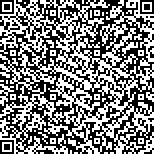| 摘要: |
| [摘要] 高尿酸血症和痛风关节炎的发病率逐年增高,在我国年轻化的趋势明显。近年来,包括超声、CT和MRI等影像学技术越来越多地应用于痛风关节炎的诊断和鉴别,这些技术的普及不仅提高了诊断的敏感性和特异性,还可以有效评估疾病的严重程度、尿酸盐沉积的范围以及监测患者降尿酸治疗的情况。多年来,除了血尿酸水平的测定以外,关节X线检查一直是诊断痛风关节炎的主要辅助手段,但是由于敏感性差,不利于早期诊断。近年来随着双能CT、超声和MRI技术在临床上的不断推广,大大提高了痛风关节炎诊断的敏感性和特异性,同时也使得痛风关节炎的早期规范化诊治水平明显改善。 |
| 关键词: 痛风关节炎 双能CT 超声 核磁共振 |
| DOI:10.3969/j.issn.1674-3806.2021.11.04 |
| 分类号:R 589.7 |
| 基金项目: |
|
| Application of imaging examinations in gouty arthritis |
|
ZHANG Xue-wu
|
|
Department of Rheumatology and Immunology, Peking University People′s Hospital, Beijing 100044, China
|
| Abstract: |
| [Abstract] The incidence rates of hyperuricemia and gouty arthritis are increasing year by year, and in China, the patients have an obvious younger trend. In recent years, imaging techniques including ultrasound, computed tomography(CT) and magnetic resonance imaging(MRI) have been increasingly applied to the diagnosis and identification of gouty arthritis. The popularization of these techniques not only improves the sensitivity and specificity of the diagnosis, but also effectively evaluates the severity of the disease and the extent of urate deposition, and monitors the effect of urate lowering therapy(ULT). For the past many years, in addition to measuring blood uric acid levels, joint X-ray examination has always been the main auxiliary method for diagnosis of gouty arthritis, but it is not conducive to the early diagnosis due to its poor sensitivity. In recent years, with the continuous dissemination and application of dual-energy CT, ultrasound and MRI techniques in clinical practice, the sensitivity and specificity of the diagnosis of gouty arthritis have been greatly improved. Simultaneously, the levels of early standardized diagnosis and treatment of gouty arthritis have been significantly improved. |
| Key words: Gouty arthritis Dual-energy computed tomography(DECT) Ultrasound Magnetic resonance imaging(MRI) |

